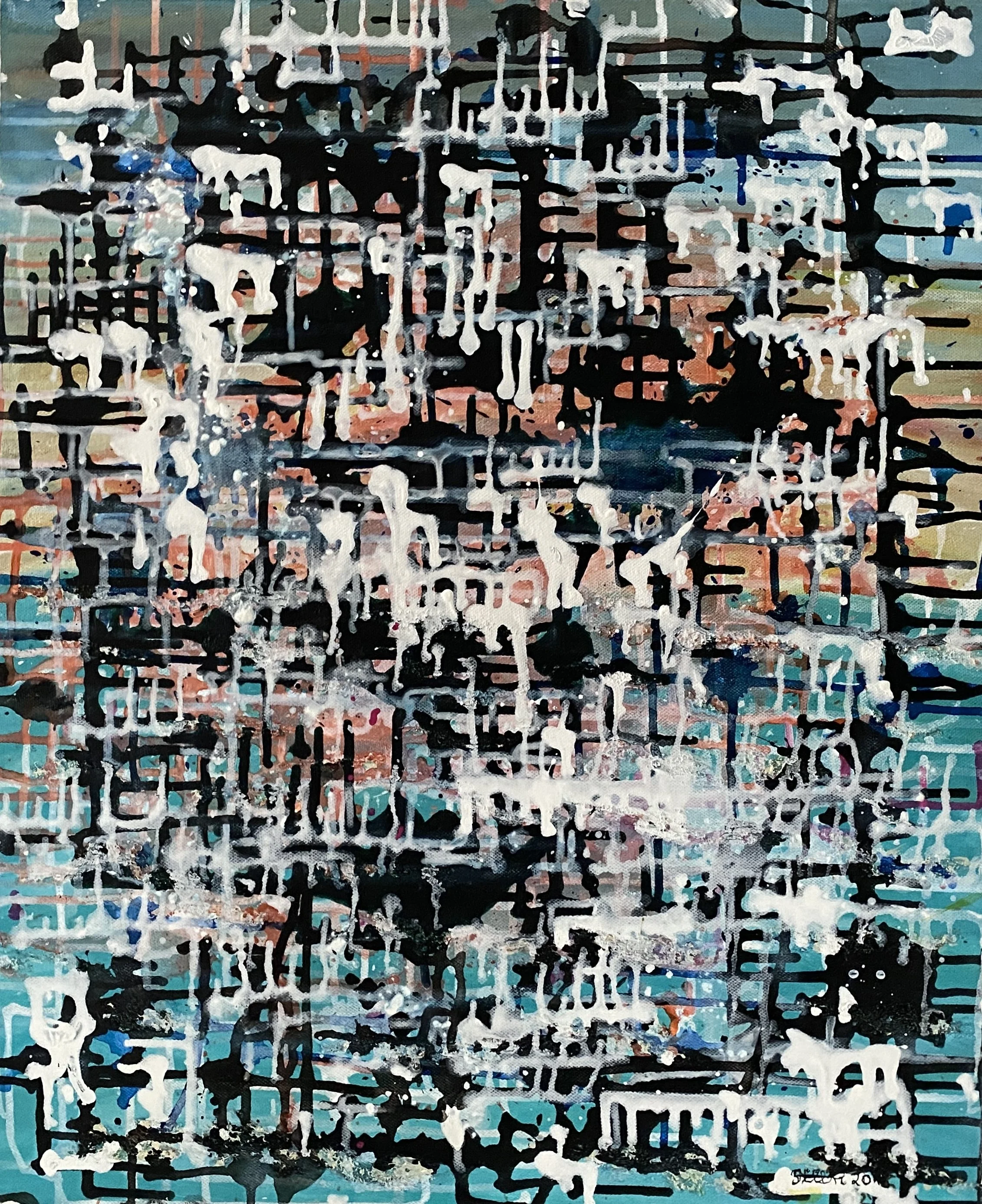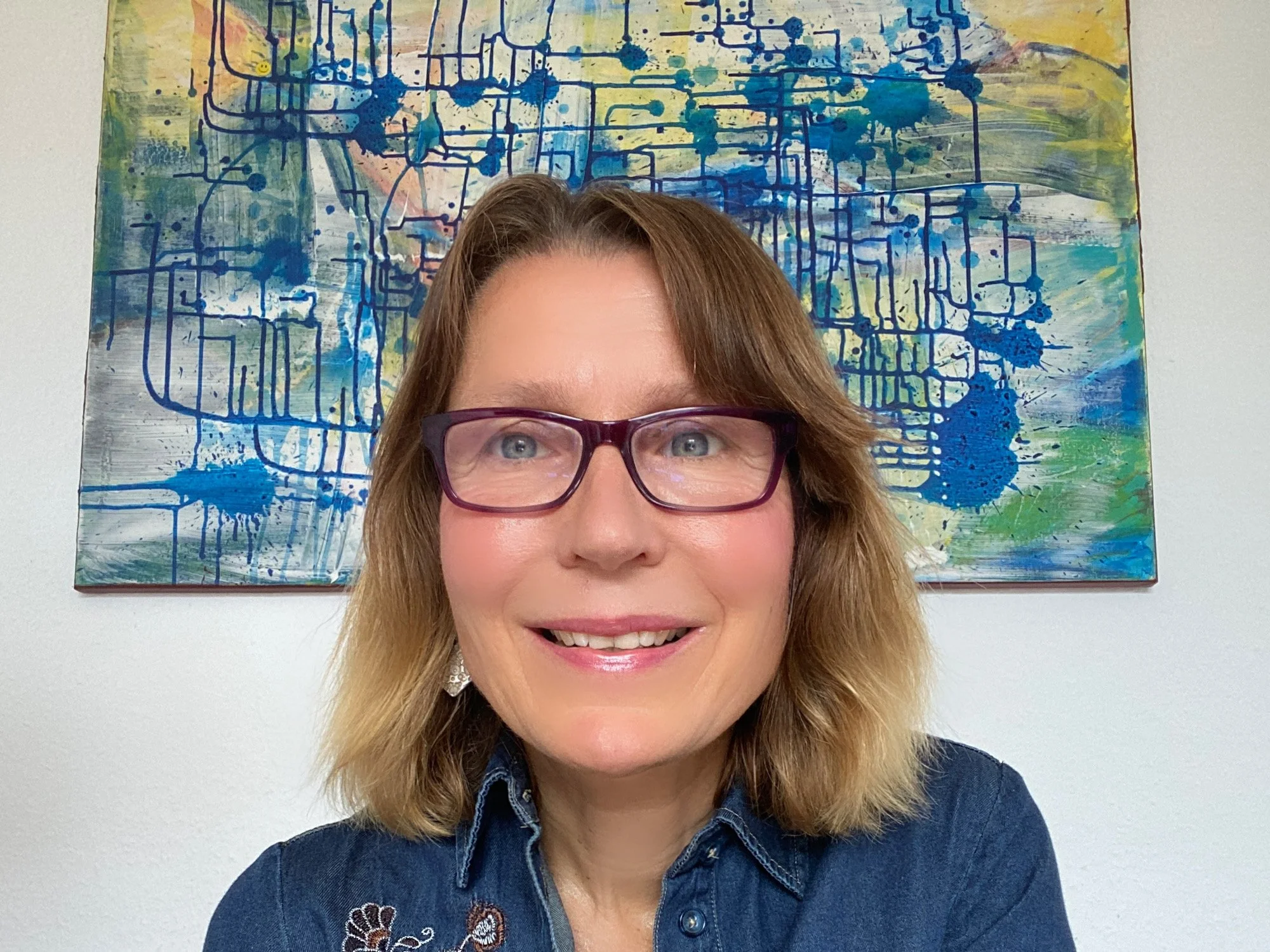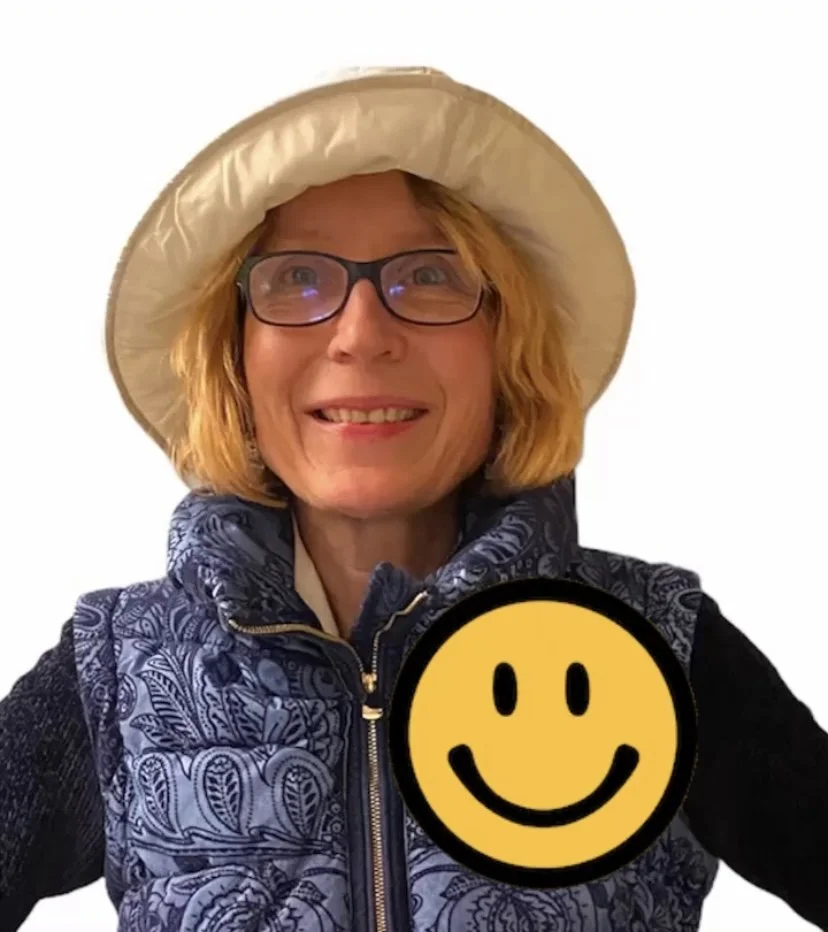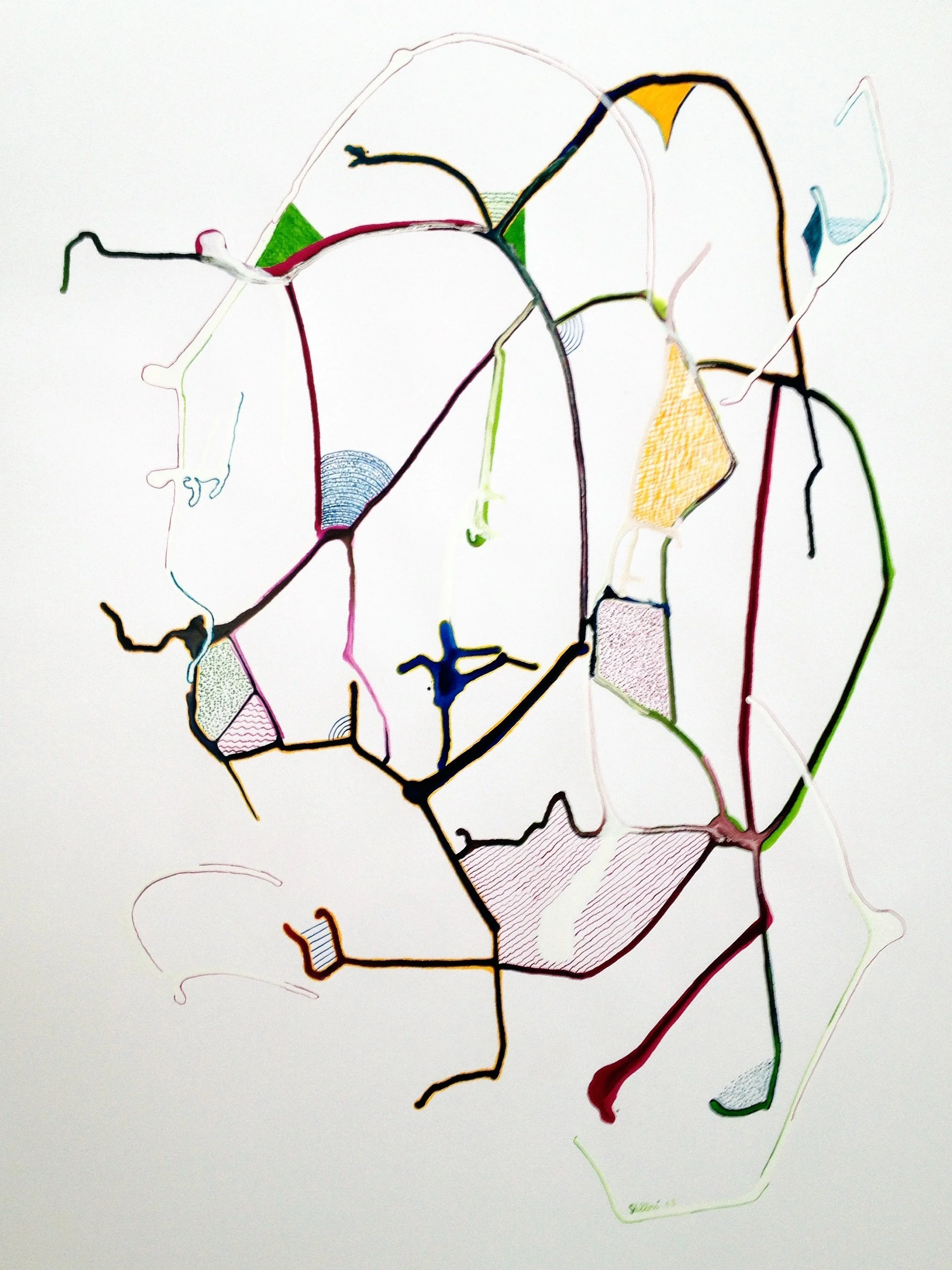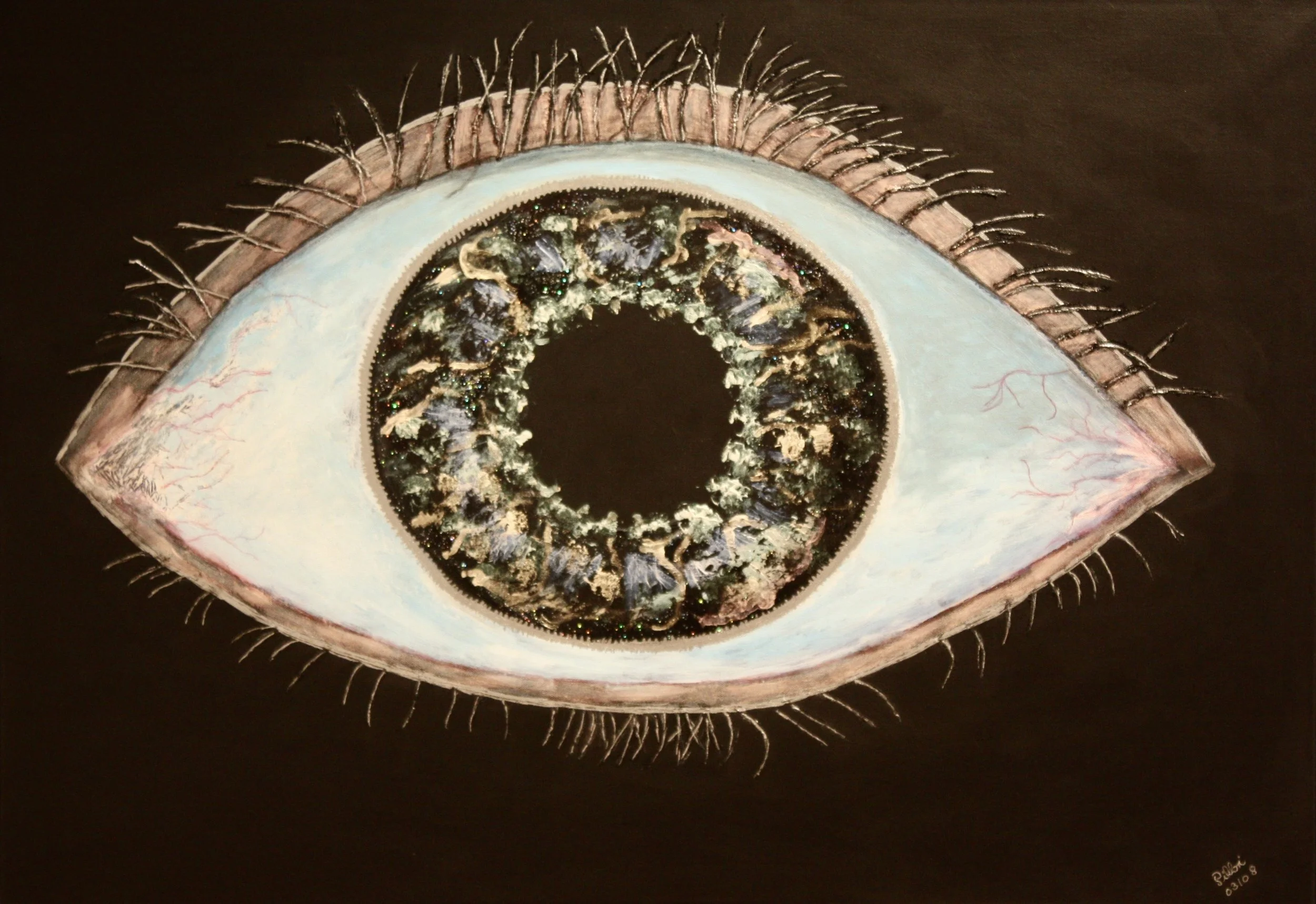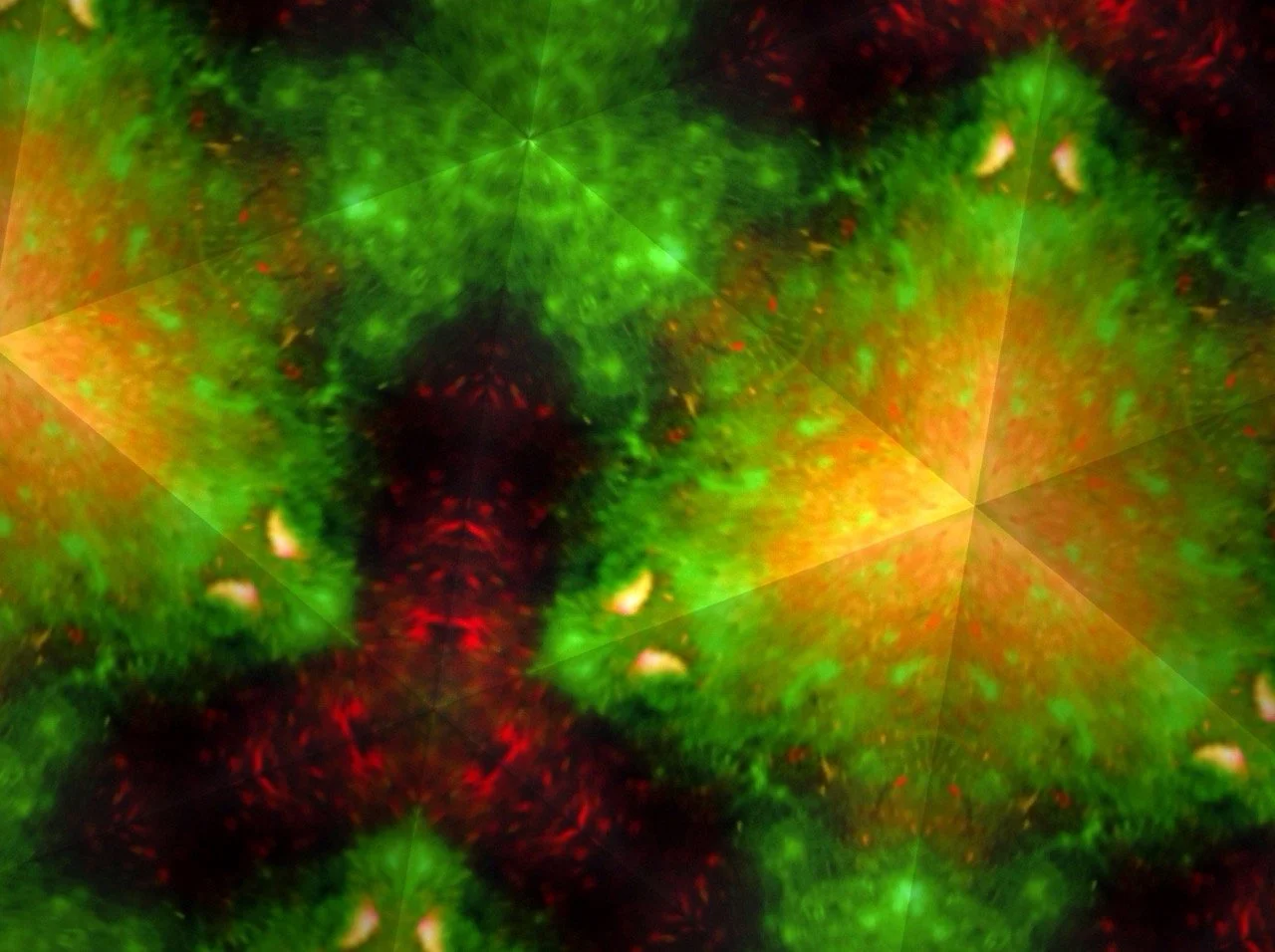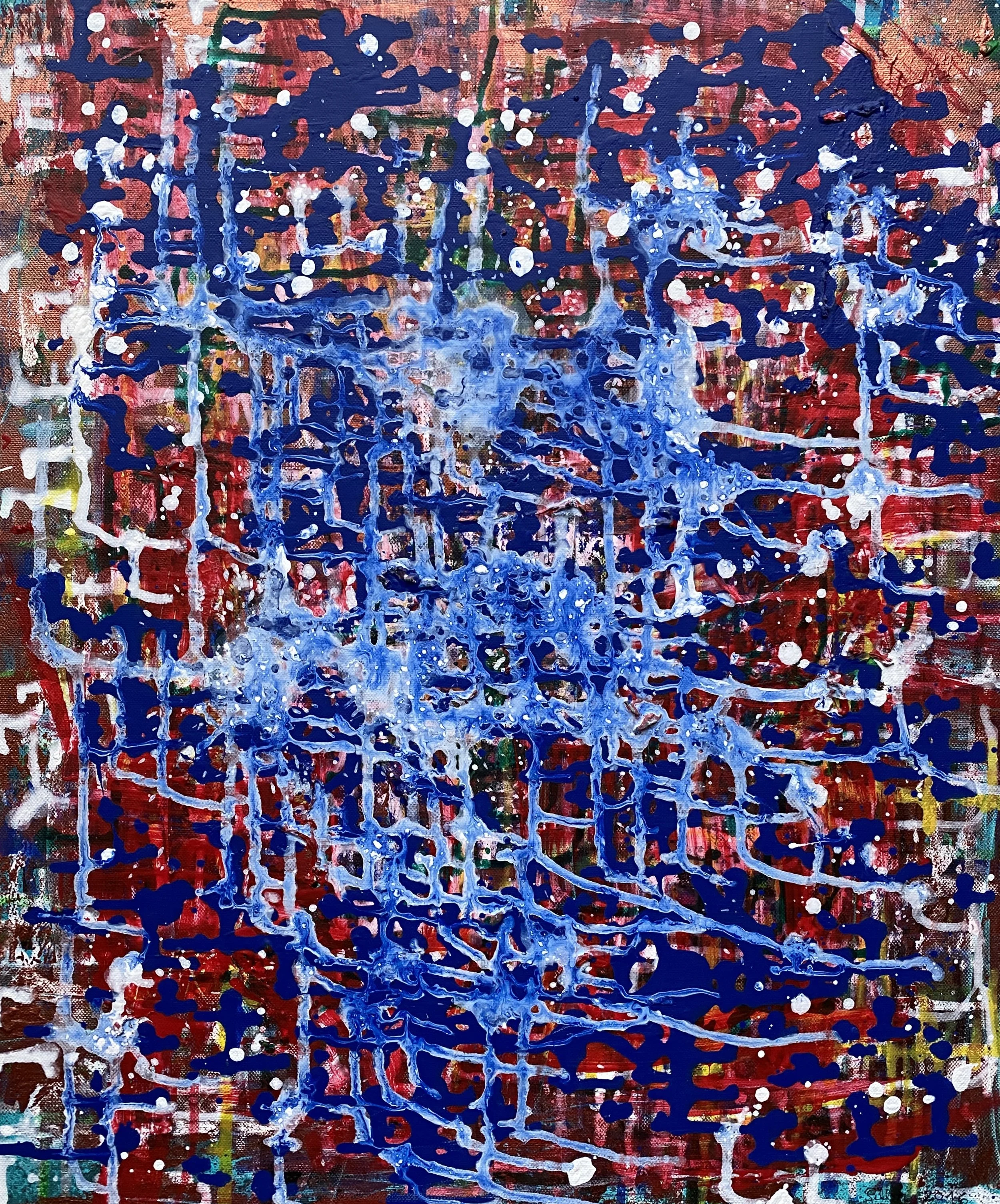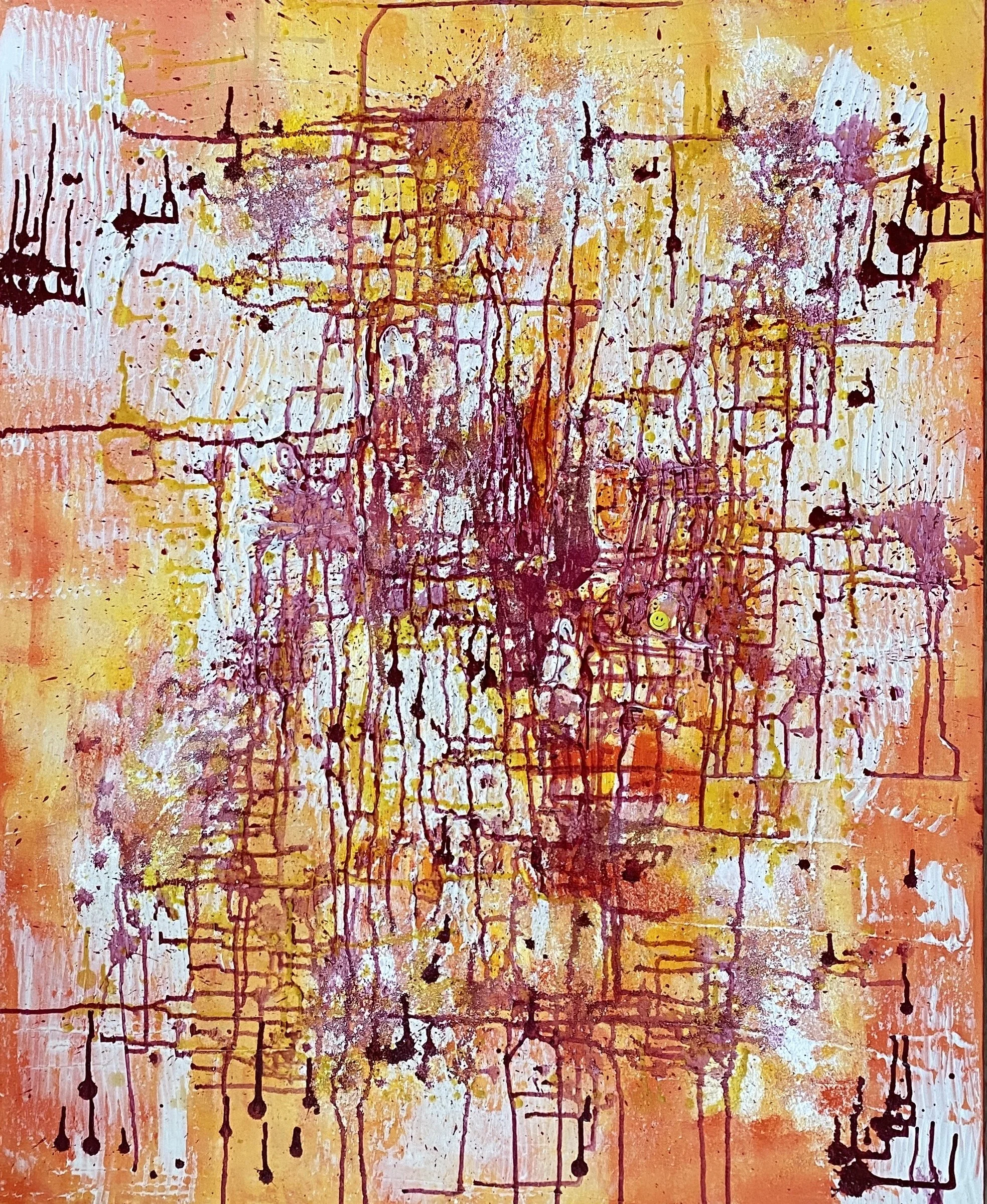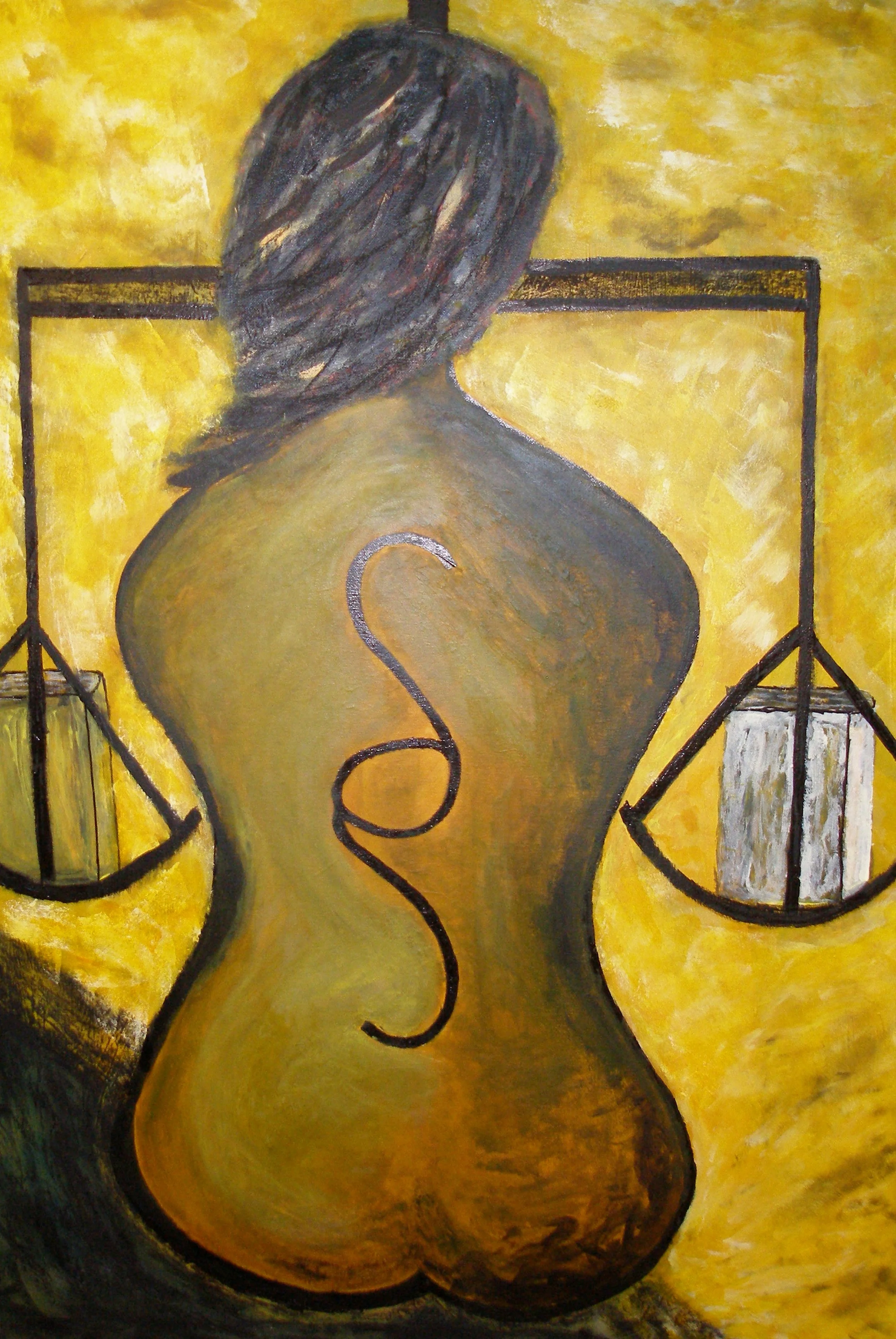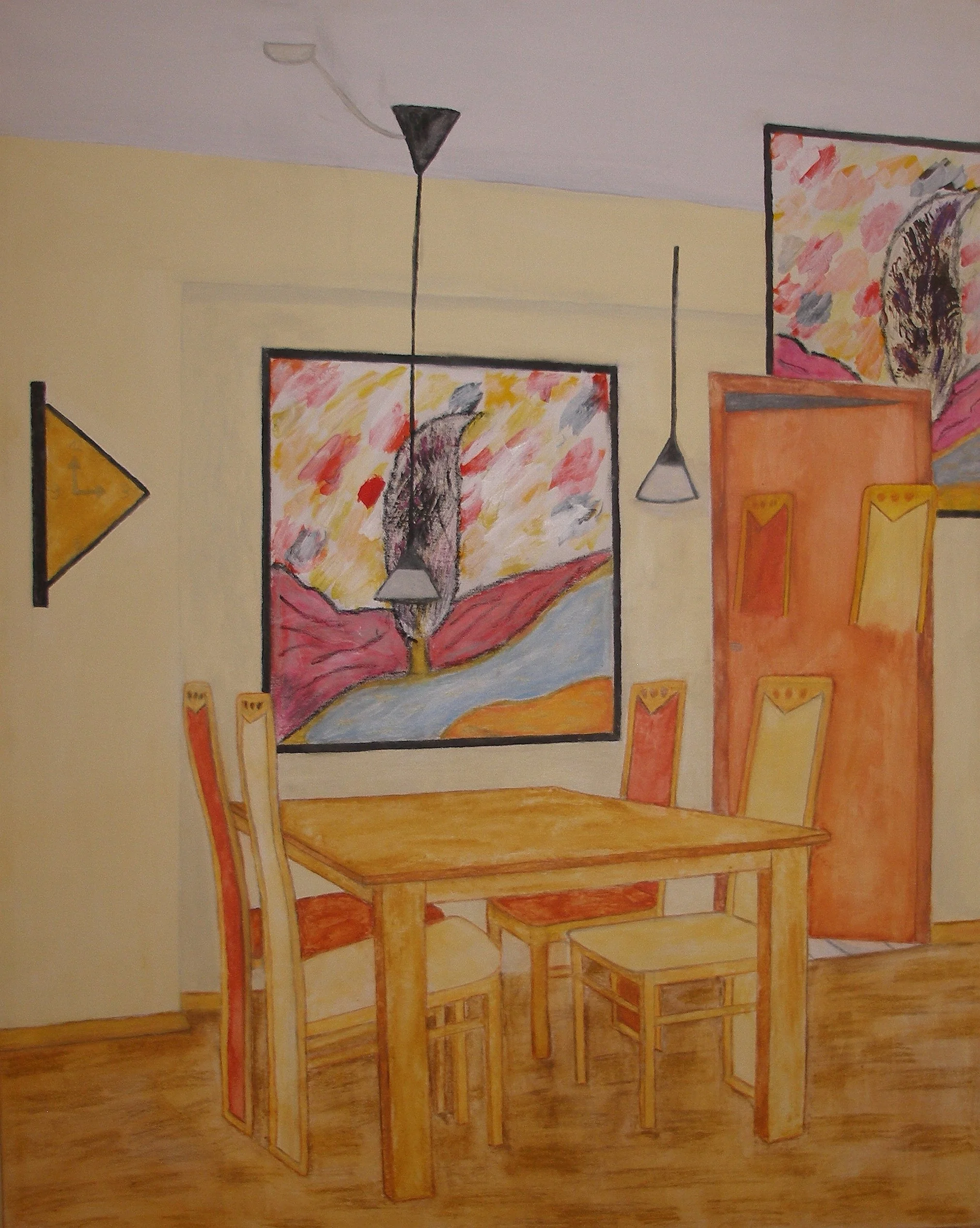Interview with Britta Neumärker alias Pilbri
"You can only see well with your heart. What is essential is invisible to the eye." from the book , The little Prince by Antoine de Saint-Exupéry is the leitmotif for the life and for 20 years, also for the art of Britta Neumärker alias Pilbri.
In her art, Pilbri deals with 'looking behind' what is not visible at first glance. For her, art is a medium for making the invisible visible.
Pilbri works mainly in series.
The largest series are City Views/Stonehenge, universe, Kaleidoscope and Floating Objects in photography, and ‘Double Vision- when eyes see different’ White Line, Brainart/Art with a smile in paintings.
It is the snippets of people's souls, communication with each other and with themselves, the living out and suppression of needs and feelings, the vulnerability of one's own person, the discrepancy and blurriness of the real and virtual world, the overstimulation of the brain, the merging of space and time that she processes in her art.
Despite all this, she finds it important to keep a smile on the face for yourself and for others.
As a child, what was it about your private art lessons that sparked your passion for art and design? Can you recall any specific moment or piece that left a lasting impression on you ?
I took private lessons by my uncle who was a teacher for art at a high school.
One day he came over with a special birthday present for me.
It was a very big box of colored pencils from Carandache three layers in a box with all colors I ever saw.
This was a a very precious present for me. I never had something like that before and could not afford those pencils.
My uncle said that it is for me , because I have the potential to become a great artist.
I was really impressed and saved those pencils as being a big piece of gold.
I still have the box and I have used the pencils very often. Sometimes I think of this special moment of my life.
How did you navigate the challenges of being a largely self-taught artist? What resources or methods did you find most effective in improving your skills?
There are many artists in the world, who are largely self taught or totally self taught.
This does not affect the quality of the art.
Art has something to do with passion and a vision and I am a passionate artist with my heart and my soul.
To feel the passion, the creativity, the energy and power of art for me is the best way to improve art skills.
How did your training under Hannelore E. Busch influence your artistic style and approach, especially given her lineage of Beuys , Grote and van Manen?
The 2 years master class of painting and drawing under Hannelore E. Busch influenced my art a lot .
I have been taught in several different techniques of art and from that time on, my art gets more and more abstract.
Previously, my paintings were more oriented towards the expressionist, impressionist style.
My role models were for example: Monet, Marc, Münter and Kandinsky.
After my master class my art was getting abstract, with dripping techniques and and I started to work with a lot of layers. In addition to that my art was getting more spiritual.
The class helped me to develop a deeper connection to nature and human spirituality. emphasizing the importance of materials and processes Hannelore Busch had a significant impact on my artistic practice, helping me to find my own creative expression. Through her, I learned how art and life are interconnected and how to reflect this connection in my own work. Since that time, my art is more and more abstract and reflects the inner struggle of human beings with themselves and with the world.
Hannelore Busch’s art lineage of Beuys, Grote and van Manen influenced this abstract style.
Beuys was an activity artist and sculptor known for his revolutionary view on art and society.
His phrase: "every person is an artist" was revolutionary and continues to move the world of art to this day.
Brain training 60x 80 cm 2014
The name ‘Pilbri’ is unique and intriguing. How does this signature reflect your identity as an artist and the evolution of your work?
Yes, the name is really special.
When I started my art, I was looking for a signature for my artwork. My birth name Britta Pilgenröder was too long. The name Britta Neumärker after my marriage was also too long.
BP reminded me of British Petrol Station and I didn’t like BN.
So I decided to use the first syllable of my birth name and my first name Britta and that was the beginning of my brand Pilbri and the signature of all my artwork.
The name Pilbri means: personal, individual, lively, bespoken ideas. Bespoken refers especially to my commissioned artworks.
You made a significant career shift from law to art. What motivated this change, and how did your experience in the legal field influence your artistic practice?
The reason for the change was a personal illness.
An accident left me with permanent double images in all directions.
This made me feel very exhausted and I could no longer do my office work, which took 8-10 hours a day.
So I decided to live my dream and work as an artist, something I had wanted to do all my life since I took lessons from my uncle.
For 13 years, double vision determined my life and my work. By working with the brain and intensive mental training, my brain learned to deal with the constant flood of stimuli and focused more and more on the essentials. I was fascinated by the brain's ability to learn and so my thinking and my art changed.
I also realized that as an artist it is important to create individual, reflective art with a personal connection and unique selling point. Through my double images, I have dealt intensively with the subject of vision, in all its facets, the creation of images, perception in general and thus also with the brain and its functions and abilities.
My professional experience in the legal field was the reason why I had my signature "Pilbri" registered as a trademark with the German Trademark and Patent Office. This also gave me the opportunity to sell and develop other items under the name Pilbri.
The eye 80 x 100. Cm 2008
Can you elaborate on the concept of ‘art in modules’ that led to your Euro Honorary Prize? How does this approach differentiate your work in the contemporary art scene?
I developed my art in modules in 2007/2008.
It is a type of conceptual art that consists of various individual parts such as canvas, aluminum Dibond plate and acrylic glass plate. Sometimes several acrylic glass or Dibond plates are used. These individual parts are processed and freely combined with each other. This is how small or large wall objects can be created. Most of the individual parts of the art in modules are artistically processed. This art in modules is a mixture of design and art. I got also the idea to put a part of the modules into furniture, especially into tables.
In the art scene, a big distinction is made between design, art and craftsmanship.
I do not differentiate between these three areas. In my opinion the boundaries between them are fluid. For me art, design and craftsmanship belong together and enrich each other.
The idea for my art in modules came from my double images, because in the first few years my eyes formed the image anew with every blink of an eye, always slightly differently.
As a result, space dissolved, straight lines became slanted, perspectives dissolved. This greatly impaired the control I had in and over my life.
By creating art in modules I restored a new control and order in modules and in my life. . Because the modules are straight and controlled.
Through my art, I was able to control my vision and the double images and its effects more and more in the course of the time.
Art in modules : Quattro compositions 100 x 100 cm 2009, Map of the world 80 x 100 cm 2009
Your work in art photography focuses on “The well-known rediscovered.”
How do you balance the original essence of these sights with your unique artistic interpretation in your photography?
My art photography started with a series of photographs of New York.
When I have visited New York in 2010 the weather wasn’t very good. It was nearly raining all the time. Despite of the beautiful and special buildings, the amazing sky scrapers, my photographs looked nearly all the same because of the weather.
I was a little bit disappointed, because my journey to New York was something special in my life. I decided to use the Photoshop program to change the appearance.
I changed the colors by painting them over with a virtual brush and use contrasts in color.
In consequence I developed amazing pictures, looking like paintings and it were mostly hard to say, wheather it is night or day.
A Galerist in Leipzig said: “The artworks are pictures like being born from dreams.”
This was consistent with my thinking that in the interconnected world, it was becoming increasingly difficult to distinguish between reality and virtual reality.
By altering the photographs, the uniqueness and beauty of the buildings is preserved forever.
After my series of New York I developed several other series of cities for example: Paris, Venice, Düsseldorf. But they are smaller. The New York series is with more than 30 pictures the largest one.
In Addition to that I developed a series from the mystery place Stonehenge.
New York central park View, Manhattan Bridge, Chrysler Building, (Photography)
What drew you to glass as a medium, and how has working with a glass designer in Duisburg expanded your artistic vocabulary?
I was fascinated by glass as a child.
I visited glassworks several times and watched the glassblowers and designers at work. I have been impressed by glass my whole life, fascinated by the color, the shapes and the special light reflections, as well as by the variety of glass.
When I met the designer in Duisburg and he told me that he was offering glass courses, I booked with him straight away.
The fusing technique particularly appealed to me. Fusing means fusing glasses. A distinction is made between partial and complete fusing of different glass parts. The expansion quotient of the individual glasses is crucial for the fusing process.
This must be identical for the glasses to be fused so that a homogeneous result is achieved.
As a result of the training with the glass designer, I initially created a few glass objects and sculptures. After that, I developed my glass jewelry as a unique piece of jewelry. In addition, various photographic works were created by photographing glass objects, broken glass and glass jewelry with some distortion on the computer as I already did with the photo series of the cities and sights.
Galaxy 1 , Supernova, ( photography)
Your recent abstract works delve deep into the human brain and consciousness. Can you discuss how personal experiences and global events have shamed these themes in your art?
Well, my double images required a lot of discipline and work to find my way in life. In addition to that two other formative events occurred in 2016. My husband had a serious stroke in February and in April I was diagnosed with a severe form of breast cancer. In return, the double images suddenly faded into the background. My life was turned upside down again.
That was reason enough for me to focus even more on the human brain and psyche, especially to understand the consequences of a stroke and to learn how to deal with it.
Since I have always been very interested in the brain, it gave me joy and even distracted me from these events.
Almost all of the works of art I have ever created deal with the topic of seeing and the view behind it. Nothing is as it seems.
The guiding principle of my art was my favorite book from childhood: “The Little Prince” by Antoine de Saint Exupéry. The sentence: “You can only see well with your heart. "The essence is invisible to the eye." was and is a key sentence in my life and in my art.The global development of the Internet, its effects and the rapid development of virtual worlds have shown me that there is no longer one world and one reality. Everyone has their own little world and reality. I noticed this myself through my permanent double images. These many small worlds and realities of each individual flood our brain and we are increasingly overwhelmed by stimuli.
From all of this, my series of works „Brain“ was created, which is not yet finished.
Rhythm of Crime 50 x 60 cm 2016 , Power of Brains 2015 50 x 60 cm
In Light of recent world events and personal experiences, you ‘ve mentioned a shift towards creating ‘art with a smile.’ How do you maintain this positive outlook in your work, and what do you hope viewers take away from these pieces?
My art with a smile was created during the Corona crisis and the outbreak of the Ukraine war. During this time and up to the present, the negative events and news in the world are so dominant that it is difficult for the individual to bear. The whole world is turned upside down. Almost every day you hear new bad news.
The order in the world is disturbed in many areas. What is true today is already outdated tomorrow. During this time I read many books about humor and cheerfulness. An old saying from my childhood came to mind that went: "Smile. It could be worse. I smiled and it got worse."
Nevertheless, cheerfulness, humor and comedy always helped people to persevere. If we all only see the negative and are frustrated, there is no hope and if there is no hope, there is no energy to live and fight for what is important to people as a whole, to remain part of evolution and not to die out through illness, war or climate change.
A new motto of mine since the Corona crisis is: No matter how bad the personal and worldly times are, there is always a reason to smile and to give ourselves a smile every day.
I personally think that is very important so that people's hope can be maintained.
In my art, this smile is reflected in my current pictures with many layers of color, with a small smiley that I have stuck somewhat hidden in the abstract painting.
In this way, I personally express that my paintings now and in the future permanently preserve hope and beauty. I am a possibilist and not an optimist. I always try to keep hope and want to pass it on with my art, - Art with a smile.
Power of Passion 80 100 cm 2022
Self portrait on the back of a woman
Yellow Room

